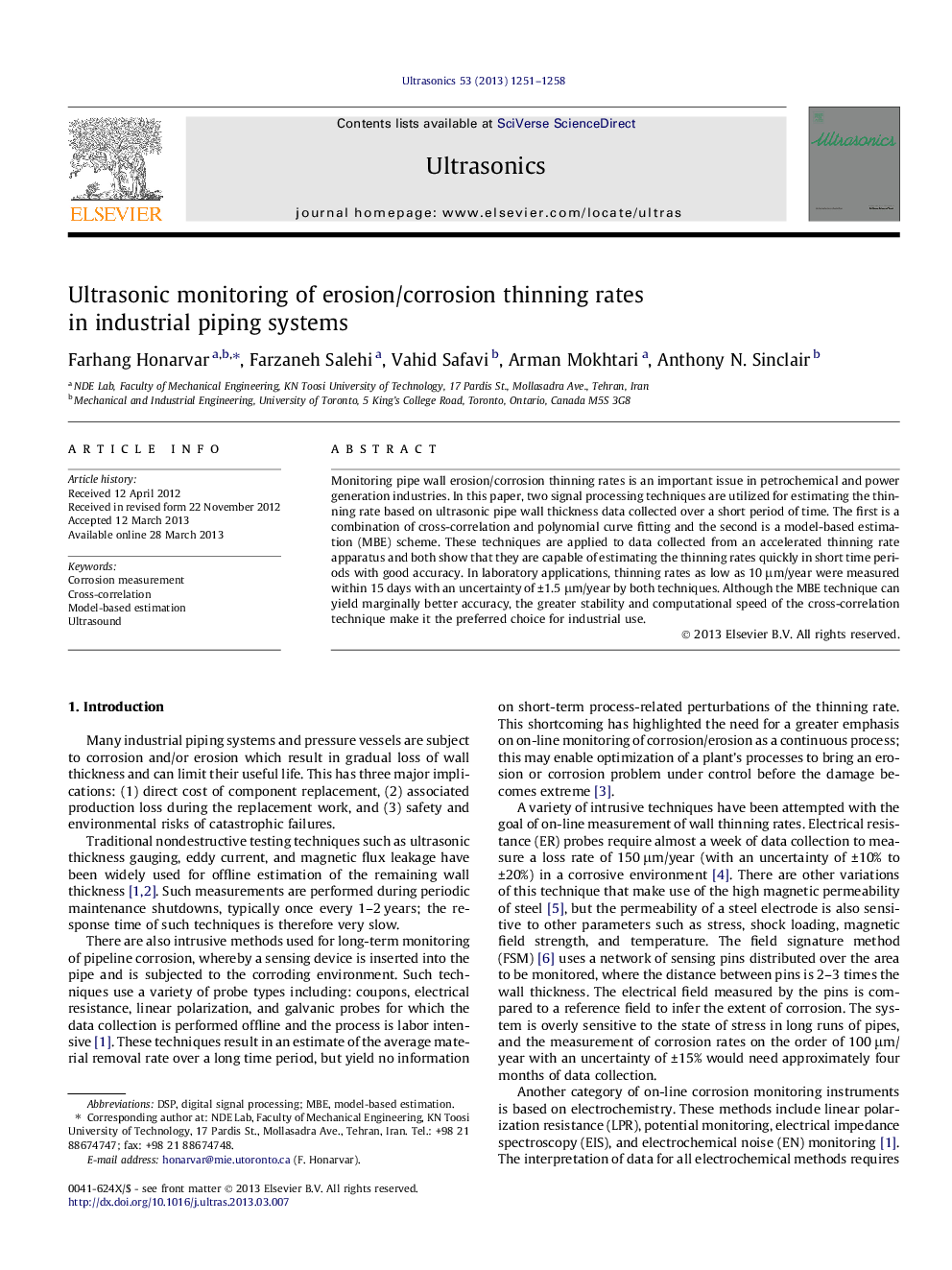| Article ID | Journal | Published Year | Pages | File Type |
|---|---|---|---|---|
| 1759098 | Ultrasonics | 2013 | 8 Pages |
•Two distinct DSP techniques are developed for monitoring of pipeline thinning rate.•Experimental data is used for comparing the two techniques.•The MBE technique is accurate but computationally expensive and sometimes unstable.•The cross-correlation technique with interpolation had neither of the above drawbacks.•Quantitative values show that very small thinning rates can be accurately measured.
Monitoring pipe wall erosion/corrosion thinning rates is an important issue in petrochemical and power generation industries. In this paper, two signal processing techniques are utilized for estimating the thinning rate based on ultrasonic pipe wall thickness data collected over a short period of time. The first is a combination of cross-correlation and polynomial curve fitting and the second is a model-based estimation (MBE) scheme. These techniques are applied to data collected from an accelerated thinning rate apparatus and both show that they are capable of estimating the thinning rates quickly in short time periods with good accuracy. In laboratory applications, thinning rates as low as 10 μm/year were measured within 15 days with an uncertainty of ±1.5 μm/year by both techniques. Although the MBE technique can yield marginally better accuracy, the greater stability and computational speed of the cross-correlation technique make it the preferred choice for industrial use.
